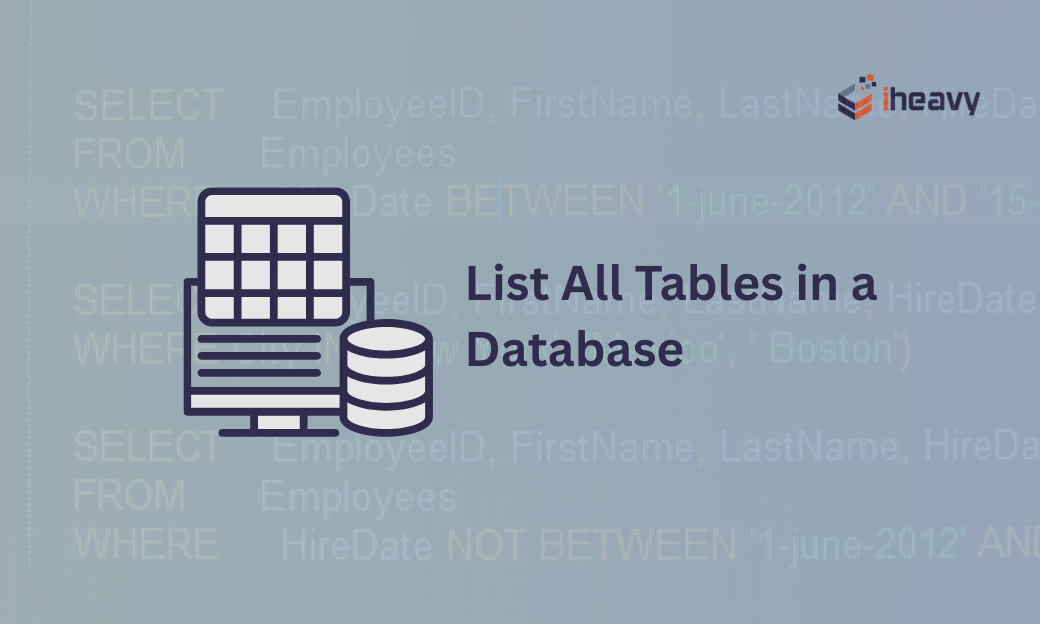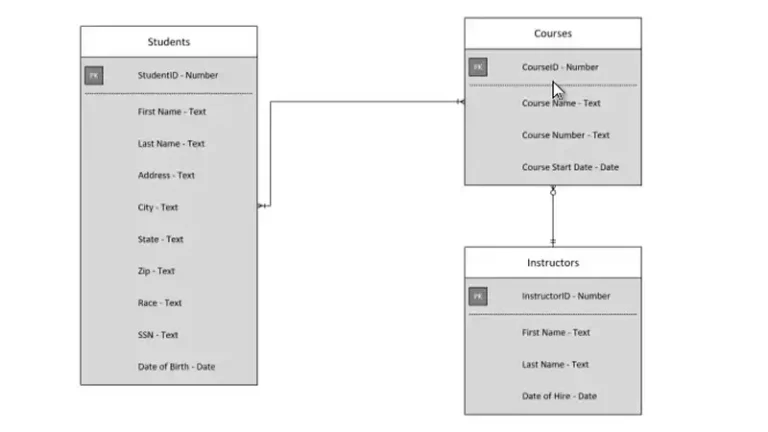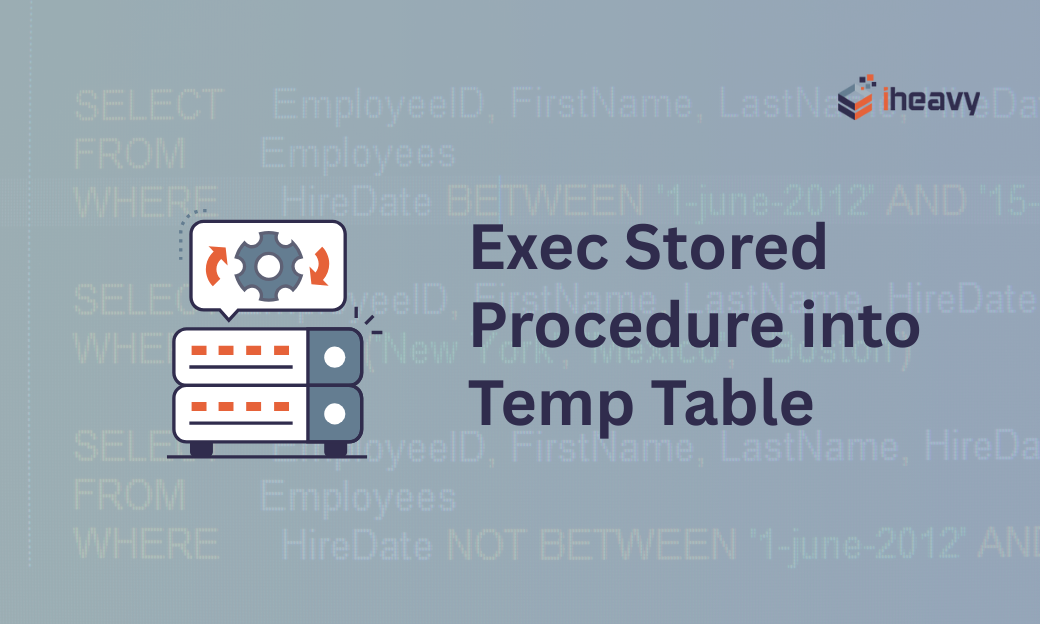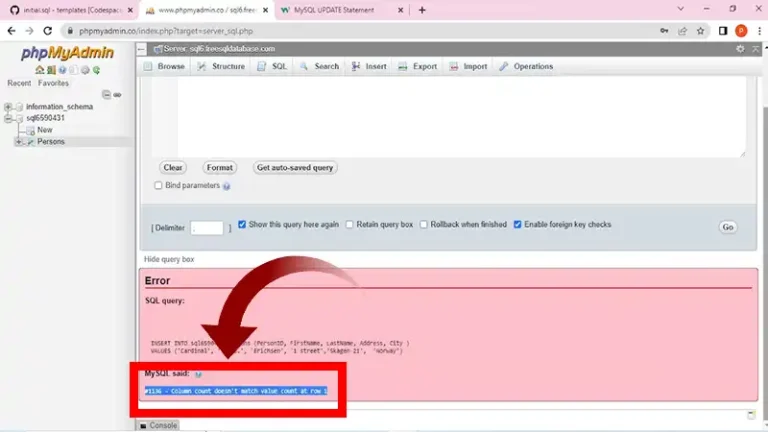How to List All Tables in a Database
In database management, understanding how to list all the tables within a database is a fundamental skill. Whether you are a database administrator, developer, or data analyst, knowing which tables exist in your database is crucial for managing data effectively.
This article explores different methods to list all tables in a database across various database management systems (DBMS), including SQL Server, MySQL, PostgreSQL, and Oracle.
How Do I List All Tables in a Database?
This section will provide you with the SQL commands and techniques to effectively list all tables in different databases.
How to Get List of All Tables in SQL Server?
In SQL Server, you can easily list all tables within a specific database using either Transact-SQL (T-SQL) queries or system views. Here are a few methods:
1. Using INFORMATION_SCHEMA.TABLES
The INFORMATION_SCHEMA.TABLES view provides information about all tables in the database. To list all tables, execute the following query:
SELECT TABLE_NAME
FROM INFORMATION_SCHEMA.TABLES
WHERE TABLE_TYPE = 'BASE TABLE';The TABLE_NAME column will return the names of all tables, while TABLE_TYPE = ‘BASE TABLE’ filters out views and only lists actual tables.
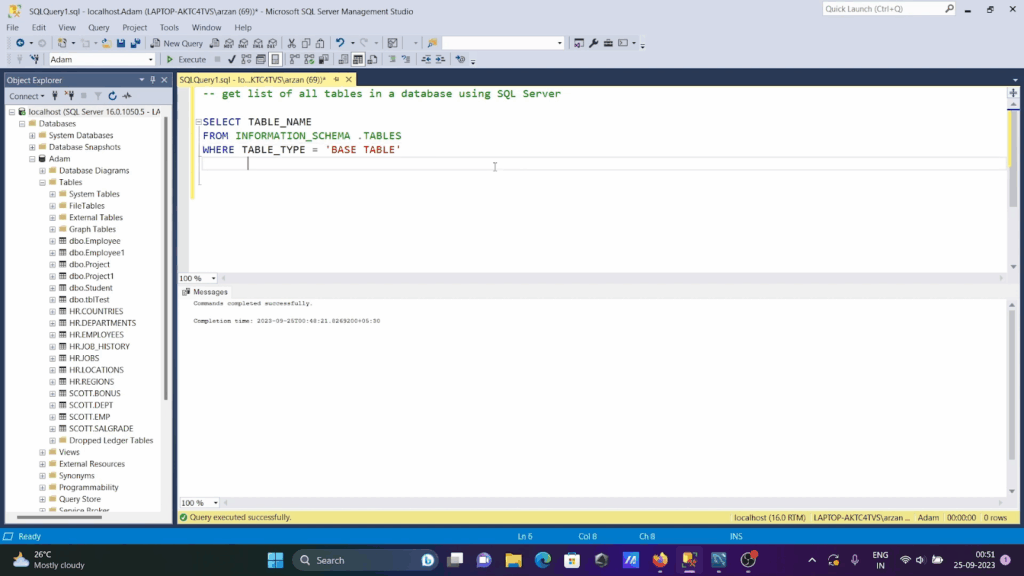
2. Using sys.tables
Another method is to use the sys.tables system catalog view, which provides metadata about the tables:
SELECT name
FROM sys.tables;This query retrieves the name of each table directly from the system catalog view, sys.tables.
3. Using sp_tables Stored Procedure
SQL Server also offers a stored procedure called sp_tables to list tables:
EXEC sp_tables @table_type = "'TABLE'";This stored procedure allows you to filter by table type, ensuring you only get tables and not views.
How to Get All Table Names in MySQL?
For MySQL, there are multiple ways to list tables in a database. Here’s how to do it:
1. Using SHOW TABLES
The SHOW TABLES command is the simplest way to list tables in MySQL:
SHOW TABLES;
Executing this command displays all the tables in the currently selected database.
2. Using INFORMATION_SCHEMA
Similar to SQL Server, MySQL also has an INFORMATION_SCHEMA database. Here’s how you can use it to list tables:
SELECT TABLE_NAME
FROM INFORMATION_SCHEMA.TABLES
WHERE TABLE_TYPE = 'BASE TABLE' AND TABLE_SCHEMA = 'your_database_name';Replace your_database_name with the name of your database. This method is particularly useful for querying metadata across multiple databases.
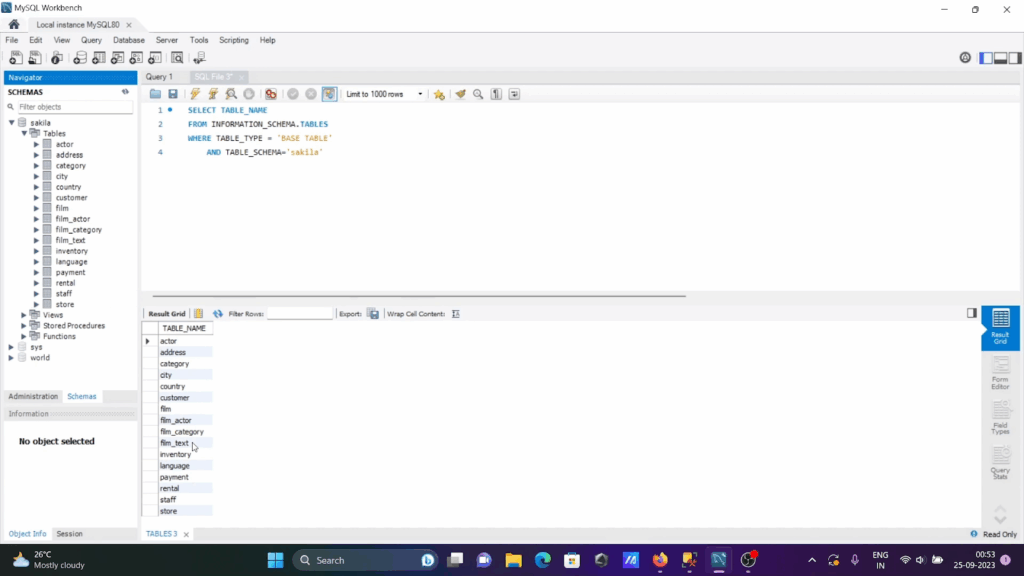
How Do I list All Tables in Postgres?
In PostgreSQL, you have a couple of methods to list all tables in a database.
1. Using pg_catalog.pg_tables
PostgreSQL’s system catalog, pg_catalog, contains a view called pg_tables which lists all tables:
SELECT tablename
FROM pg_catalog.pg_tables
WHERE schemaname != 'pg_catalog' AND schemaname != 'information_schema';This query excludes system tables by filtering out the pg_catalog and information_schema schemas.
2. Using \dt Command in psql
If you are using the PostgreSQL interactive terminal psql, you can use the \dt command:
\dtThis command lists all tables in the currently connected database, providing a quick overview.
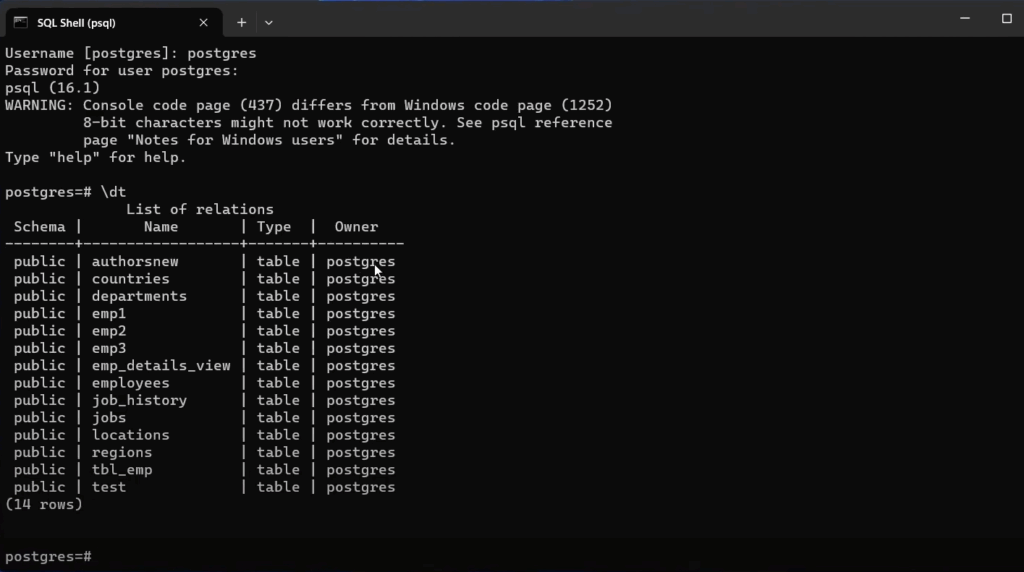
How to Get List of All Tables in Oracle?
Oracle databases offer several ways to list tables.
1. Using ALL_TABLES
The ALL_TABLES view shows all tables accessible to the current user:
SELECT table_name
FROM all_tables;This view includes all tables to which the user has access, regardless of ownership.
2. Using DBA_TABLES
For users with DBA privileges, the DBA_TABLES view can be used to list all tables in the database:
SELECT table_name
FROM dba_tables;This view provides information on all tables in the database but requires DBA access.
Frequently Asked Questions
How to show the whole table in SQL?
To see the information in a table in SQL, you can use the SELECT command. This command gets data from a specific table, and you can choose what data to get based on the conditions you set.
How do I view multiple tables in Access?
Go to the Design tab, find the Show/Hide group, and click on “Table Names.” Double-click the tables you want to see, and then click “Close.”
Conclusion
Listing all tables in a database is a common task that varies slightly depending on the DBMS in use. From INFORMATION_SCHEMA views and system catalog tables to simple commands like SHOW TABLES, understanding these methods allows you to efficiently manage and navigate your database environments.
Each method provides a different way to access metadata about the tables, whether it’s through system views, stored procedures, or interactive terminal commands. By mastering these commands and queries, you can ensure a better understanding and management of your database structures.
